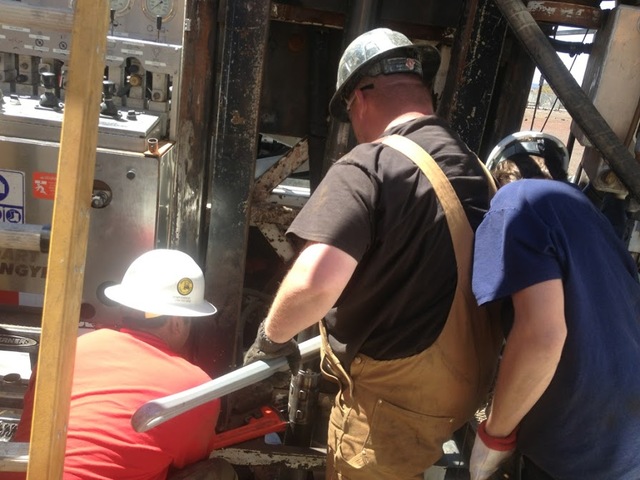In a dry land with the highest utility rates in the country, conflicts over water and power generation are never far from hand. ADVERTISING In a dry land with the highest utility rates in the country, conflicts over water and
In a dry land with the highest utility rates in the country, conflicts over water and power generation are never far from hand.
Now, residents who want to wade into these sometimes hot waters — or simply understand where they live — have a new database at their disposal. The University of Hawaii at Manoa this week announced the creation of the Hawaii Groundwater &Geothermal Resource Center, an online clearing house of data on island — and state — water wells and also the volcanic hotspots where new geothermal ventures could be added to the often controversial existing ones.
Loaded with maps, data, studies and history, the site was designed by the Hawaii Institute for Geophysics and Planetology to help experts track and understand groundwater and how it is being used, and where geothermal potential exists.
The site is also a one-stop for amateurs to come up to speed on the hydrologic and volcanic dynamics of their island, provided they are willing to plow through the data.
Residents can find out how many wells are drilled in their area, or how water quality and salt content varies from region to region, said Donald Thomas, one of the leaders of the database initative and director of The Center for the Study of Active Volcanoes at the University of Hawaii at Hilo.
“It will also help us — if we can maintain it in operation for an extended period of time — to recognize changes in the groundwater supply that may occur from climate change or increasing demand on the resources,” Thomas said. “If we can better understand the resources, we have a better chance of managing them sustainably.”
Nicole Lautze, another researcher spearheading the creation of the resource center, said high levels of public interest in water and geothermal spurred the initiative.
“Our goal is to educate individuals and facilitate responsible management of these resources into the future,” said Lautze, an assistant researcher at HIGP.
The searchable site is broken into four project areas which are still being developed. One is devoted entirely to research at the Humuula experimental wells in the Saddle area.
The “Humuula Groundwater Research” project contains online updates, photos and background on two exploratory wells where groundwater was found at unexpectedly high levels in the eastern corner of Pohakuloa Training Area. “Hawaii State Water Wells” features an interactive map of well sites, with information on depth, ownership and other data. The project digitalizes all water wells on file with the state Commission on Water Resource Management.
The “Hawaii Geothermal Digital Collection” compiles 1,000 digital documents, photographs, maps and videos on the state’s geothermal exploration and development.
The “Hawaii Play Fairway Project,” once completed, will integrate geothermal, geochemical and geological data into a map showing hotspots and potential geothermal sites, the first statewide assessment of the resource since the 1970s. The first phase of the project runs from October 2014 to October 2015 and is designed to boost geothermal exploration.
Lautze acknowledged the contention surrounding groundwater and geothermal resources.
“Ideally, with sound knowledge in hand,” she said, “scientists, resource managers, potential developers, policymakers and the public will have the information to protect and utilize Hawaii’s natural resources and to plan for a sustainable future.”
The HGGRC on the Web: higp.hawaii.edu/hggrc



